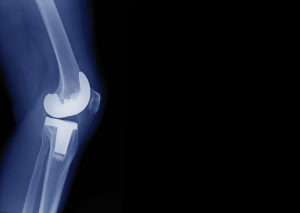The Nebraska Supreme Court ruled today that a trial court did abuse its discretion in striking the testimony of a physician regarding the causal relationship between a diagnosis of fibromyalgia and it traumatic onset. The case is Epp v. Lauby, 271 Neb. 640. This case reiterates Nebraska’s interpretation of Daubert v. Merrell Dow Pharmaceuticals, Inc., 509 U.S. 579, 113 S. Ct. 2786, 125 L. Ed. 2d 469 (1993), and Schafersman v. Agland Coop, 262 Neb. 215, 631 N.W.2d 862 (2001).
Under our recent Daubert/Schafersman jurisprudence, the trial court acts as a gatekeeper to ensure the evidentiary relevance and reliability of an expert’s opinion. Schafersman v. Agland Coop, 262 Neb. 215, 631 N.W.2d 862 (2001). See, also, Smith v. Colorado Organ Recovery Sys., 269 Neb. 578, 694 N.W.2d 610 (2005). Most recently, we described a trial court’s evaluation of the admissibility of expert testimony as essentially a four-step process. State v. Mason, ante p. 16, 709 N.W.2d 638 (2006). First, the court must determine whether the witness is qualified to testify as an expert. If the expert is and it is necessary for the court to conduct a Daubert analysis, the court must next determine whether the reasoning or methodology underlying the expert testimony is scientifically valid and reliable. Once the reasoning or methodology has been found to be reliable, the court must next determine whether the methodology was properly applied to the facts in issue. Finally, the court determines whether the evidence and opinions related thereto are more probative than prejudicial, as required under Neb. Evid. R. 403, Neb. Rev. Stat. § 27-403 (Reissue 1995). State v. Mason, supra.
The Court’s conclusion is:
Although the issue is disputed, there is support in the medical literature for the theory that physical trauma can cause fibromyalgia. That support, while controverted, is the result of peer-reviewed research conducted pursuant to appropriate methods of scientific inquiry. While there is not a sufficient scientific consensus to say that the theory is generally accepted, nor has a rate of error been established, the theory that trauma can cause fibromyalgia has been the subject of empirical research, the results of which have been subjected to peer review and publication. See Daubert v. Merrell Dow Pharmaceuticals, Inc., supra. We cannot conclude that Handke and Bennett’s reliance on this research, instead of literature to the contrary, was methodologically unreliable. If proffered scientific evidence rests on sound scientific reasoning or methodology and properly can be applied to the facts in issue, it meets the Daubert requirements for admissibility, even if the conclusion is novel or controversial. See State v. Dahood, supra. Despite the existence of “spirited dissent,” see State v. Sampson, 167 Or. App. at 503, 6 P.3d at 553, the lack of a scientific consensus on the link between trauma and fibromyalgia was not sufficient to render reliance upon that literature methodologically unreliable. We, therefore, conclude that the evidence was sufficient to support the theory of a causal relationship between physical trauma and fibromyalgia and that the trial court abused its discretion in concluding otherwise.

The Legal Examiner and our Affiliate Network strive to be the place you look to for news, context, and more, wherever your life intersects with the law.










Comments for this article are closed.